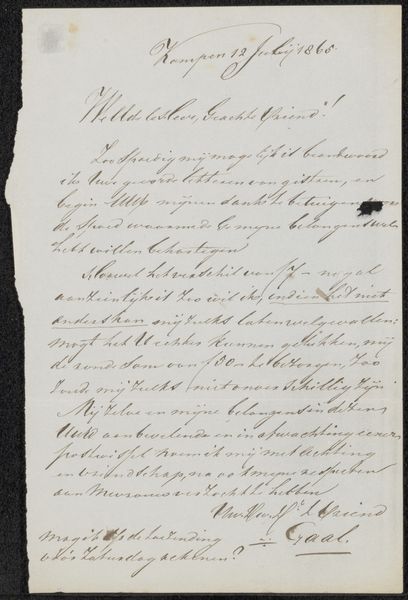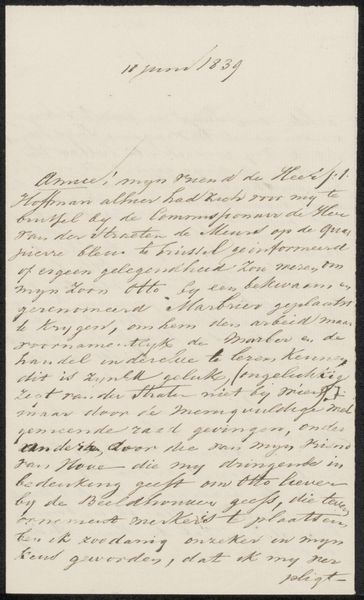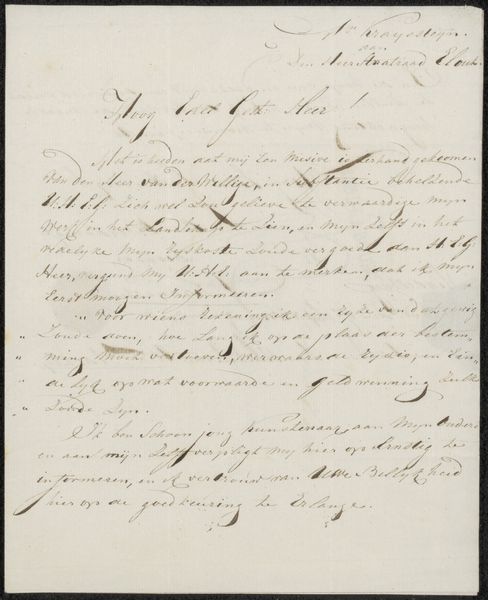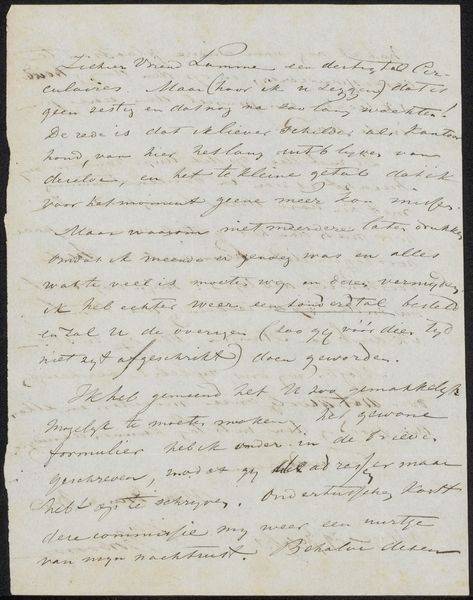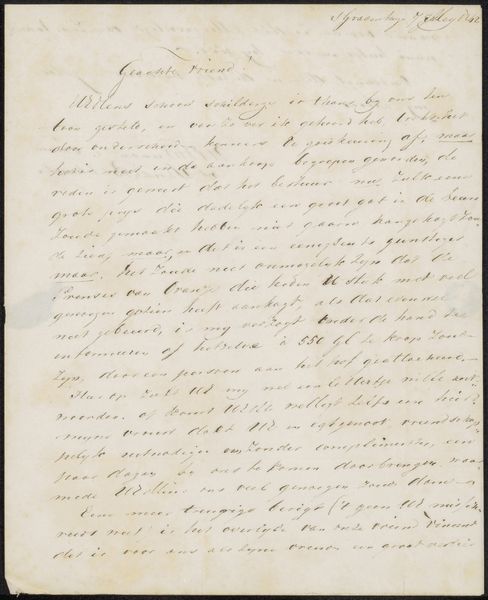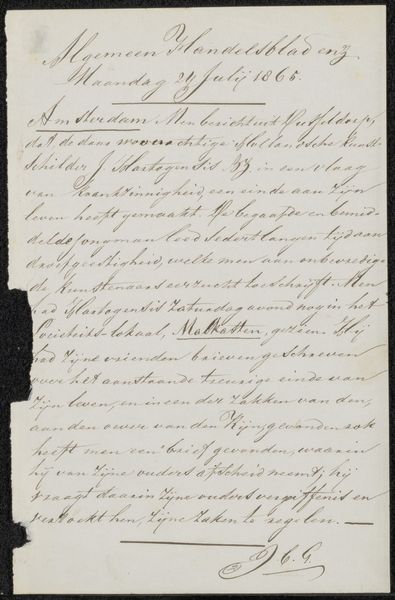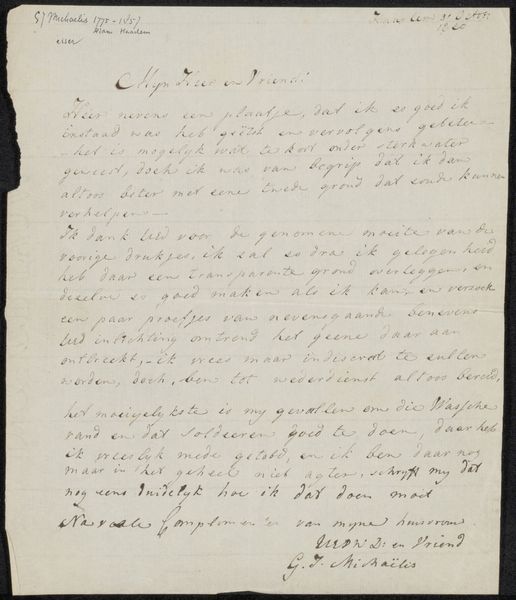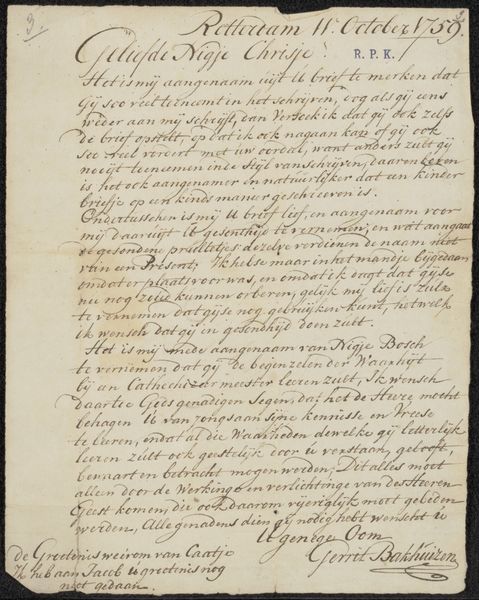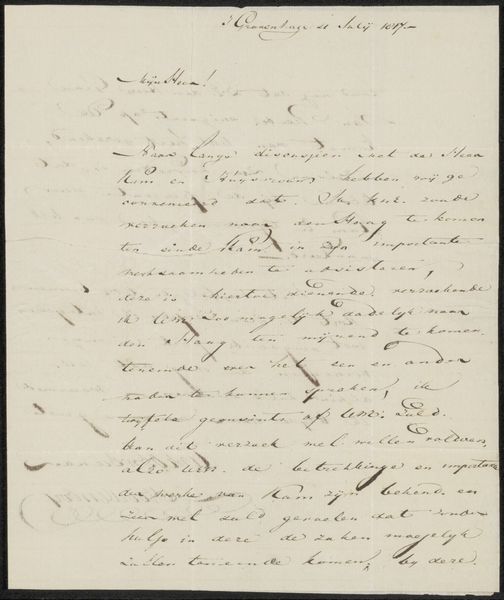
Brief aan de commissie van de Tentoonstelling van Levende Meesters in Utrecht Possibly 1848
0:00
0:00
drawing, paper, ink
#
portrait
#
drawing
#
ink paper printed
#
paper
#
ink
#
calligraphy
Copyright: Rijks Museum: Open Domain
This letter, penned by Johan Coenraad Leich around 1842, serves as a powerful symbol of the artist's struggle for recognition and the complexities of artistic patronage. The recurring motif of humble supplication—evident in phrases seeking favor and consideration—echoes across centuries, finding resonance in medieval devotional images where supplicants kneel before divine figures, hands clasped in prayer. This gesture, deeply ingrained in our collective memory, taps into the primal desire for acceptance and validation, a theme as relevant in the 19th century art world as it was in earlier religious contexts. Consider how this yearning for acceptance mirrors the emotional intensity of a Caravaggio painting. The use of handwriting itself, with its unique, individual characteristics, adds another layer. The act of writing, with its imperfections and flourishes, becomes a tangible expression of the self, an attempt to communicate not just information but also personality and intent. This mirrors the emotional and psychological investment artists and patrons put into art. The letter is more than a historical document; it is a mirror reflecting our enduring human need for connection.
Comments
No comments
Be the first to comment and join the conversation on the ultimate creative platform.

